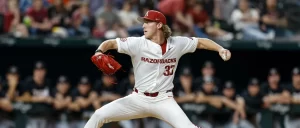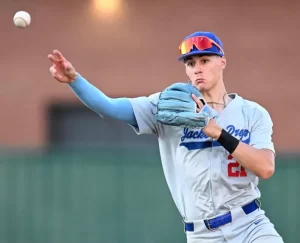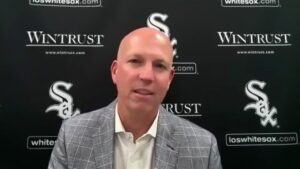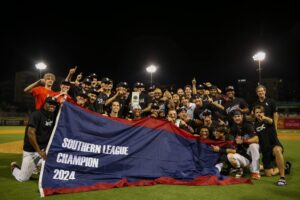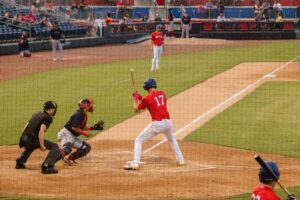2020 Draft Preview: Tanner Burns (RHP)
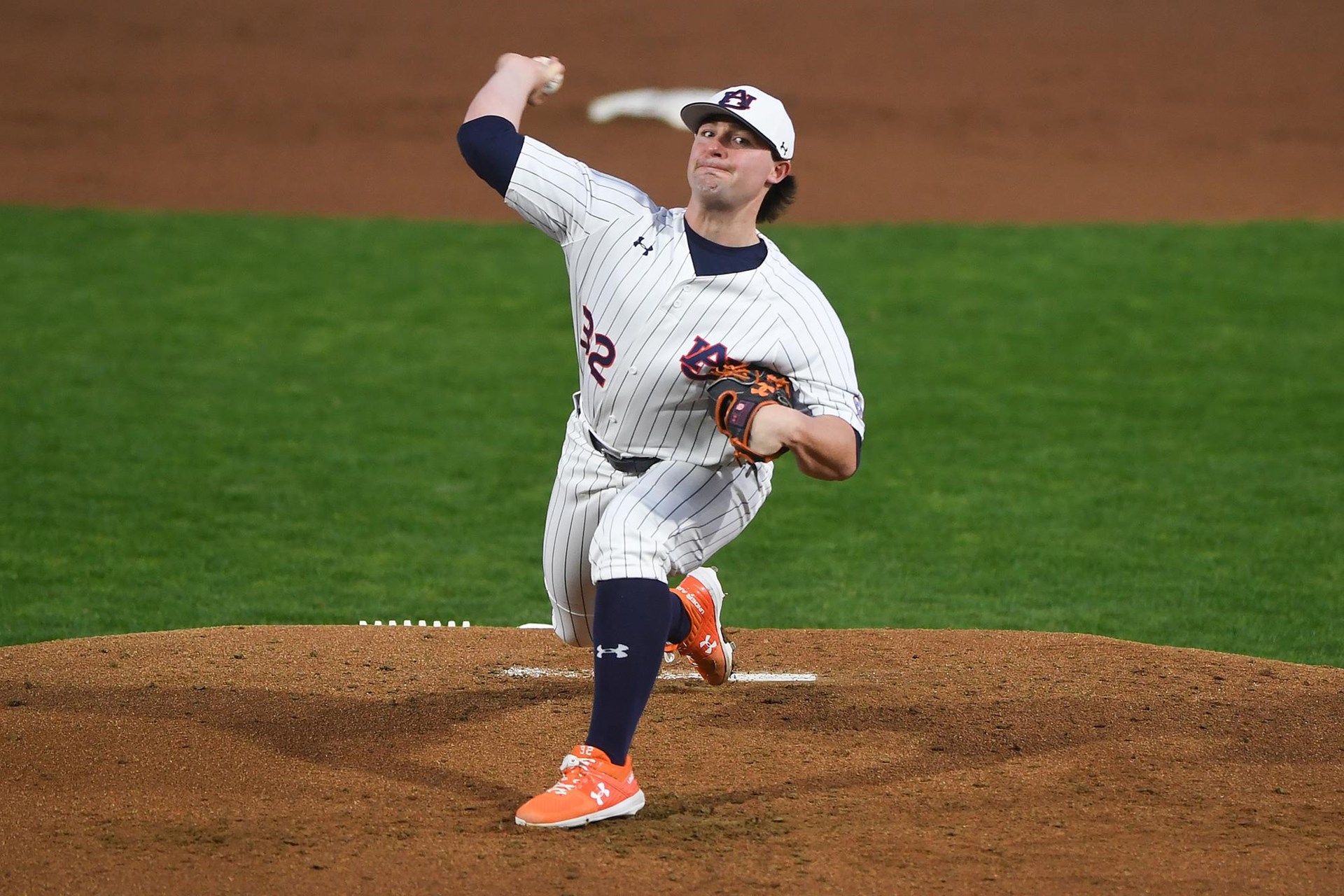
Shanna Lockwood/AU Athletics
NAME: Tanner Burns
SCHOOL: Auburn
POSITION: RHP
HEIGHT/WEIGHT: 6’0” 215
B/T: R/R
D.O.B.: December 28, 1998
PREVIOUSLY DRAFTED: 2017, 37th round (New York Yankees)
Scouting Report
Tanner Burns of Decatur, AL, was rated by Perfect Game as the No. 4 player in the state and 33rd in the country as a high school senior after pitching for Decatur High School. He was named a two time All-American in 2016-17 by outlets such as Max Preps and Under Armour and declined his first professional opportunity with the New York Yankees in favor of pitching in the SEC for Auburn University.
Burns transitioned seamlessly from high school to college. By season’s end, the right hander ranked second on the team in strikeouts (77), the most by a Tiger freshman since 2008, and innings pitched (86.2) while boasting a 3.01 ERA across 17 starts.
According to Auburn Athletics, Burns became the first freshman in the program since 1998 to start an NCAA Tournament opener. He later held No. 1 Florida to one run on five hits in the team’s first super regional win in program history. Baseball America named Burns a Freshman All-American.
The product out of northern Alabama improved in his sophomore year by increasing his strikeout total to 101 in 79.2 innings, while also walking 14 fewer batters than the year prior. He joined Auburn alum Casey Mize as the only other pitcher in the program since 2000 to strikeout over 100. Burns finished 2019 with a 2.82 ERA and allowed six earned runs over 22.1 innings (2.42 ERA) prior to an abrupt end to his junior year due to Covid-19.
Scouting Grades
*Scouting grades are according to MLB Pipeline’s rankings, grades may vary between different publications*
Fastball: 60
Slider: 55
Changeup: 50
Control: 55
Overall: 50
Prospect Overview and Future Outlook
Burns offers a high-3/4’s delivery with a reliance on his fastball that ranges from 92-95 mph consistently, while topping out at 97. He incorporates a slider that sits in the low-80’s that sometimes dips to the upper-70’s when the righty wants to take something off.
MLB Pipeline’s Jim Callis provides a breakdown on Burns:
When he’s 100 percent, he can work a 92-97mph fastball and locate it to both sides of the plate. His breaking ball can be a plus pitch at times; combining slider velocity in the low-80’s with curveball depth, though it gets slurvy at times. He hasn’t had much need for a changeup, but it has some sink and shows some signs of becoming an average third pitch. Burns lacks size and while he’s strong and athletic, he comes with durability concerns because of shoulder issues as a sophomore and a history of seeing his stuff dip later in the season. Though there’s no projection remaining in his 6-foot frame, his proponents see some similarities to another former Southeastern Conference star, Sonny Gray.
Jim Callis, MLB.com
Raplh Lifshitz of Prospects Live managed to catch a Burns start and provided valuable insight on pitch tendencies and sequences. The 21-year-old works his best pitch consistently, the fastball, that he maneuvers well to both sides of the plate thanks to his plus command.
From Lifshitz after scouting Burns v. Chicago State:
The ability to manipulate his fastball gives Burns the ability to throw it with great frequency early in starts. He’ll create excellent angle on his fastball low in the zone, getting late run on the pitch particularly when landed on the inner-half to right-handed hitters. The late run makes it an early strike stealer and swing and miss pitch in one strike counts. He’ll then come back to the fastball at the top of the zone showing rise and backspin. These unique movement profiles allow Burns to attack the zone early and often with heat the first time through the order. When batters do make contact with the fastball it’s often driven into the ground, as only two pitches allowed hard contact on the pitch all night.
Ralph Lifshitz, Prospects Live
Burns does a great job of mixing speeds and benefits from a 10-15 mph discrepancy between his fastball and secondary offerings. His slider is more advanced than his change and has worked more as his “out pitch” compared to the latter. Albeit inconsistent, the changeup can develop into an effective offering, especially against left-handed hitters, as it has late arm-side run thrown from a release point that mimics his fastball when he has it all working.
Mock Draft Outcomes
The mechanically sound Burns has been mocked to go in the mid-to-late selections of the first round, although landing spots are sporadic across several publications. Our James Fox mocked Burns to go No. 16 overall to the Chicago Cubs, which is consistent to what ESPN Insider Kiley McDaniel suggested around mid-May. Baseball Prospect Journal, meanwhile, proposes he goes to Cleveland at pick 23.
Callis released a mock draft on May 13th suggesting Burns will land with the Atlanta Braves at No. 25. In a more recent edition, however, Callis has Burns falling out of the first round entirely. MLB.com’s Jonathan Mayo left the Auburn righty out of his most recent attempt as well.
Baseball America sends Burns to the Pittsburgh Pirates at pick No. 31 in their most recent exercise. Keith Law of The Athletic, Kiley McDaniel of ESPN and Eric Longenhagen of Fangraphs all failed to include Tanner in their most recent updates.
Potential Fit with the White Sox
The White Sox are in a unique position within the organization to allow the draft to come to them in the first round. Based on the depth in the farm system, it would make sense should the scouting department, led by Mike Shirley, decide on a prep player or a college pitcher.
Burns offers projectable mechanics and stuff ticketed to translate well enough to breeze through the low levels of Minor League Baseball. His best quality is command, so if Chicago is in love with that attribute, then look no further than Tanner Burns. However, concerns over size at 6’0” along with minor shoulder issues across his junior year has affected his stock.
There will likely be higher graded college arms available at pick No. 11 and if the Sox want to go that route, I can’t imagine Burns comes off the board that high. That’s not a knock on the kid, though.
Burns has long been considered among the best at his position throughout his baseball career at multiple levels and he clearly was up to the challenge offered by an always competitive SEC. While Burns is unlikely to be the selection at pick 11 overall, the White Sox did track him this spring and he could be a potential under-slot option.
Photo credit: Shanna Lockwood/AU Athletics
Want to know right away when we publish a new article? Type your email address in the box on the right-side bar (or at the bottom, if on a mobile device) and click the SUBSCRIBE button. Our list is completely spam free, and you can opt out at any time. Also, consider supporting FutureSox on Patreon! You will get early access to special articles and Patreon-only posts, in addition to more benefits. Shop our exclusive merchandise! Show your support with the latest FutureSox apparel.

